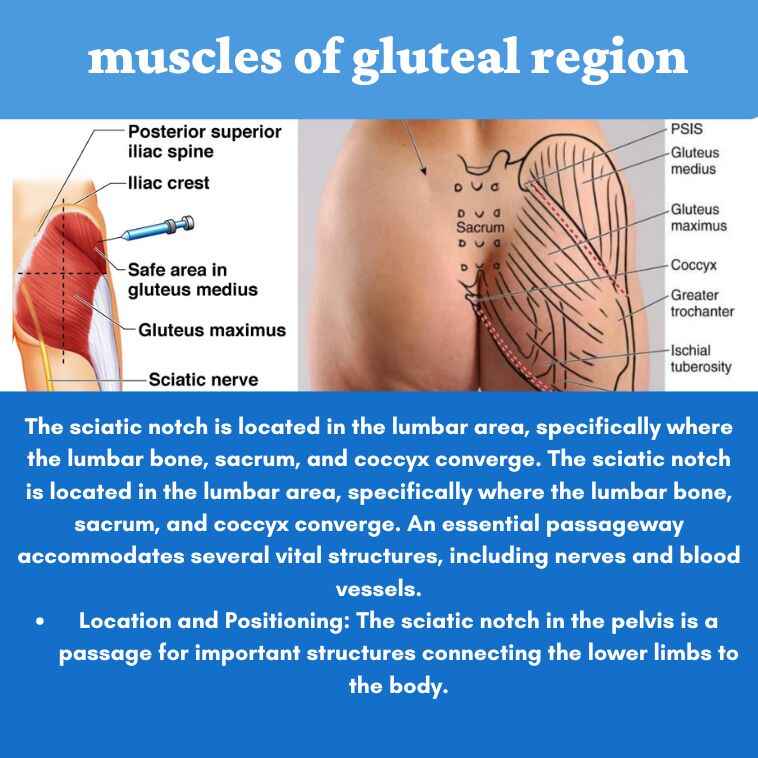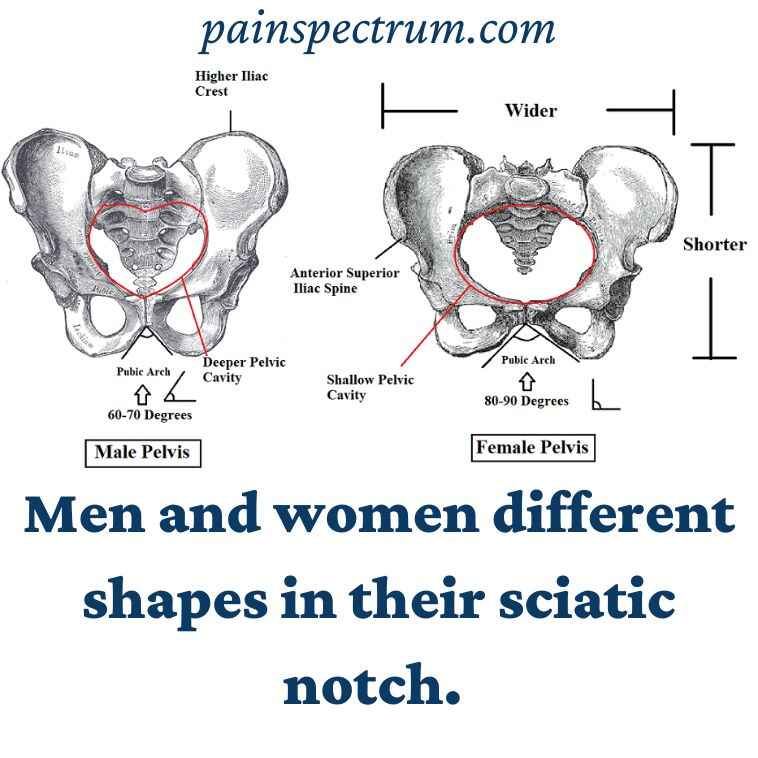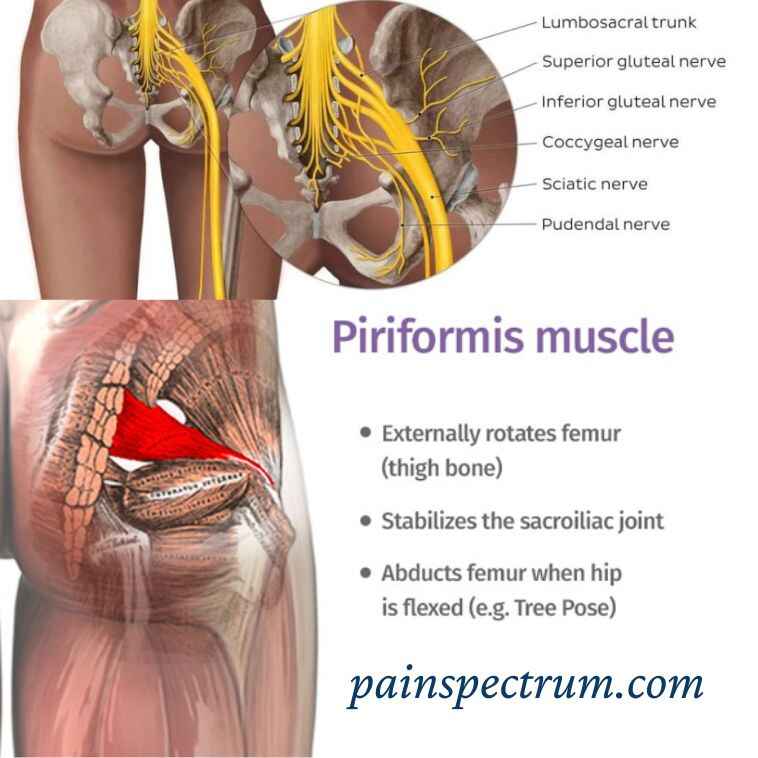
Exploring the Sciatic Notch- Best Guide 2024
Last updated on December 12th, 2025 at 06:03 pm
The sciatic notch is a crucial part of our body’s anatomy, playing a significant role in our health. By exploring this structure, we can gain insights into how our body functions and maintains health. Let’s delve into the anatomy and function of the sciatic notch to understand its importance better. By the end of this guide, you will appreciate why the sciatic notch is essential for our overall health.
Table of Contents
Anatomy of the Sciatic Notch

- Location and Positioning: The sciatic notch in the pelvis is a passage for important structures connecting the lower limbs to the body.
- Bone Structures Surrounding the Sciatic Notch: The sciatic notch is surrounded by the pelvic bone, sacrum, and coccyx, protecting the structures passing through it.
- Pelvic Bone: The sturdy pelvic bone forms the upper boundary of the sciatic notch, offering support and stability to the pelvic region.
- Sacrum: Below the pelvic bone lies the sacrum, a triangular bone at the base of the spine. The sciatic notch is situated on the side of the sacrum.
- Coccyx: Positioned beneath the sacrum, the coccyx, also known as the tailbone, completes the boundary of the sciatic notch, helping to maintain its structure.
Ligaments in the Sciatic Notch:
The sacrospinous and sacrotuberous ligaments are crucial in strengthening the sciatic notch, providing important support and stability for the pelvic area.
- Sacrospinous Ligament: This ligament connects the sacrum to the ischial spine, creating the lesser sciatic foramen.
- Sacrotuberous Ligament: This ligament extends from the sacrum to the ischial tuberosity. It supports body weight and stabilizes the pelvis.
Understanding the Sciatic Nerve
The sciatic nerve controls movement and sensation in the lower limbs. Originating from spinal nerves L4 to S3 in the lower back, it exits the pelvis through the greater sciatic foramen and travels down the back of the thigh. Near the knee, it divides into the tibial and common peroneal nerves, which further branch out to supply various muscles and areas of the leg and foot.

The sciatic nerve passes through the greater sciatic notch when it exits the pelvis. This connection is important because any pressure or irritation in the sciatic notch can affect the function of the sciatic nerve. Understanding the location and pathway of the sciatic nerve around the sciatic notch is crucial for diagnosing and treating conditions such as sciatica.
Read More Comprehensive Guide: Greater Sciatic Notch
Sex Differences and Variations in the Sciatic Notch
| Sex | Greater Sciatic Notch and Implications |
|---|---|
| Men | Narrower and deeper. There is a higher risk of sciatic nerve compression, which can cause conditions like sciatica. |
| Women | Wider and shallower. Facilitates childbirth by allowing more space for the baby to pass through. The wider notch may affect the distribution of stress in the pelvis. |
Clinical Significance
Causes and Evaluation: Pain in the sciatic notch can be caused by pressure on the sciatic nerve, inflammation, or ligament injuries. Doctors conduct thorough examinations, use imaging tests like MRI or CT scans, and sometimes perform nerve tests to assess nerve function.
Bone and Soft Tissue Tumors: Tumors in the bones or soft tissues near the sciatic notch may appear as dumbbell-shaped masses, causing pain, numbness, or weakness in the leg.
Sciatica from Schwannoma: Schwannomas are benign tumors arising from Schwann nerve cells. When located near the sciatic notch, they can compress the sciatic nerve, leading to sciatica symptoms like pain, numbness, and weakness.
Techniques for Sciatic Notch Palpation
Palpation of the sciatic notch involves gently pressing on the area surrounding the pelvis to locate the bony landmarks and ligaments associated with the notch. Healthcare providers may use palpation techniques to assess for tenderness, swelling, or abnormalities in the sciatic notch area, which can indicate potential issues such as nerve compression or inflammation.
Research and Studies

Recent research has examined the shape and differences in the sciatic notch among various groups. Understanding these differences benefits doctors during surgery, imaging tests, and treatment. Men and women exhibit different shapes in their sciatic notch. Scientists have compared the shape of the sciatic notch in great apes and humans, aiding in our understanding of the evolutionary changes in our bodies and movement patterns over time.
Health Implications
Sciatic Notch and Nerve Compressions or Entrapments: The sciatic notch plays a critical role in the passage and protection of the sciatic nerve. Conditions such as piriformis syndrome or sciatica can lead to compression or entrapment of the sciatic nerve as it passes through the greater sciatic foramen, resulting in pain, tingling, or numbness radiating down the leg.
Sciatic Notch in Age-Related Bone Loss and Osteoporosis: As individuals age, they may experience bone loss and decreased bone density, leading to changes in the shape and integrity of the sciatic notch. These alterations may increase the risk of fractures or structural abnormalities in the pelvis, potentially exacerbating nerve compression or other related conditions.
Functions and Importance
| Function | Description |
|---|---|
| Role in Lower Limb Movement | The sciatic notch allows structures like the sciatic nerve and blood vessels to move smoothly during activities such as walking and running. |
| Transmission of Nerve Signals | The sciatic notch helps transmit nerve signals between the lower limb and the brain. The sciatic nerve carries information about sensations and movements between the leg and the brain. |
| Stability and Support | The sciatic notch helps support the pelvis and maintain its strength, keeping it aligned and strong during activities that involve bearing weight. |
Diagnostic Techniques
Clinical Assessment: A healthcare provider will conduct a thorough physical examination of the sciatic notch, assessing for tenderness, swelling, or abnormalities in the pelvic region and evaluating neurological symptoms such as pain, numbness, or weakness in the lower limbs.
Imaging Studies (MRI, CT Scan): Imaging studies such as MRI or CT scans can visualize the anatomy of the sciatic notch and surrounding structures in detail, helping identify structural abnormalities that may contribute to symptoms.

Electromyography (EMG): EMG is a diagnostic test that measures the electrical activity of muscles and the nerves controlling them. It can assess the function of the sciatic nerve and detect any abnormalities in nerve conduction, providing insights into the underlying cause of symptoms such as pain, weakness, or sensory disturbances in the lower limbs.
Treatment Options
Conservative Approaches: Rest, avoiding activities exacerbating symptoms, and using hot or cold packs can alleviate pain and inflammation. Physical therapy and chiropractic care can also help improve flexibility, strengthen muscles, and promote proper spine and pelvis alignment.
Physical Therapy: Physical therapy exercises and techniques aim to alleviate pain, improve mobility, and enhance muscle strength and flexibility. Therapists may prescribe specific exercises targeting the muscles surrounding the sciatic notch to reduce pressure on the sciatic nerve and improve overall function.
Medications: Over-the-counter pain relievers such as nonsteroidal anti-inflammatory drugs (NSAIDs) can help reduce pain and inflammation. In some cases, prescription medications such as muscle relaxants or neuropathic pain medications may be recommended.
Lifestyle Modifications: Maintaining a healthy weight, practicing good posture, and avoiding prolonged sitting or standing can help alleviate pressure on the sciatic nerve and prevent worsening symptoms.
Invasive Interventions: Invasive interventions may be considered for individuals who do not respond to conservative treatments. Corticosteroid injections into the affected area can reduce inflammation and alleviate pain. In severe cases or when conservative measures fail, surgical procedures such as decompression surgery or nerve release may be recommended.
Read More: How to Get Rid of Sciatica Pain Permanently
Preventive Measures and Maintenance
- Stretching and Strengthening Exercises: Regular stretching and strengthening exercises targeting the muscles surrounding the sciatic notch can improve flexibility, reduce muscle tension, and enhance stability in the pelvic region.
- Ergonomic Practices: Practicing good ergonomic principles, such as maintaining proper posture while sitting, standing, and lifting heavy objects, can reduce strain on the spine and pelvis.
- Injury Prevention Strategies: Implementing injury prevention strategies, such as warming up before physical activity, using proper lifting techniques, and avoiding overexertion, can prevent injuries that may lead to sciatic notch-related pain.
Postoperative Care and Rehabilitation
| Postoperative Care Aspect | Description |
|---|---|
| Rehabilitation Exercises | Following surgical intervention, rehabilitation exercises prescribed by a physical therapist are essential for promoting healing, restoring mobility, and preventing complications. |
| Gradual Return to Activities | A gradual return to activities is crucial to avoid re-injury and ensure a successful recovery after surgery. |
| Follow-up Monitoring | Regular follow-up appointments with healthcare providers are necessary to monitor progress, address any concerns or complications, and adjust treatment plans. |
FAQs
1. What is the sciatic notch and how does it determine gender?
The sciatic notch is an anatomical feature of the pelvis, with variations between men and women. It tends to be narrower and deeper in men and wider and shallower in women, aiding in childbirth.
2. What passes through the greater sciatic notch?
The greater sciatic notch allows passage for several structures including the sciatic nerve, superior and inferior gluteal nerves and vessels, pudendal nerve, and internal pudendal vessels.
3. What is the mnemonic for the greater sciatic foramen?
A common mnemonic to remember the contents passing through the greater sciatic foramen is “SPIN SIP”:
- Superior gluteal nerve and vessels,
- Piriformis muscle,
- Inferior gluteal nerve and vessels,
- Nerve to obturator internus,
- Sciatic nerve,
- Internal pudendal vessels and nerve,
- Posterior femoral cutaneous nerve.
4. What is the sciatic notch in MRI?
In MRI, the sciatic notch is visualized to assess any abnormalities or pathologies involving the sciatic nerve, surrounding ligaments, and bony structures.
5. What is the difference between sciatic notch and SI joint pain?
Sciatic notch pain typically involves issues with the sciatic nerve as it passes through the notch, while sacroiliac (SI) joint pain originates from the joint between the sacrum and the iliac bones of the pelvis, often causing localized pain in the lower back and buttocks.
6. How do you measure the sciatic notch?
The sciatic notch can be measured using imaging techniques like X-rays, MRI, or CT scans to determine its angle and width, which can vary between individuals and be used for forensic and clinical purposes.
7. Where is the sciatic notch pain?
Pain associated with the sciatic notch is typically felt in the lower back, buttocks and may radiate down the leg due to sciatic nerve involvement.
8. What is the sciatic nerve landmark?
The sciatic nerve landmark refers to anatomical points used to locate the sciatic nerve, such as the midpoint between the ischial tuberosity and the greater trochanter of the femur.
9. How to confirm sciatica?
Sciatica can be confirmed through a combination of clinical evaluation, imaging studies (MRI, CT scans), and nerve conduction tests.
10. What are the main causes of sciatica?
The main causes include herniated discs, spinal stenosis, piriformis syndrome, and injuries to the pelvic region affecting the sciatic nerve.
11. Can sciatica be cured?
Sciatica can often be managed and symptoms alleviated with a combination of conservative treatments such as physical therapy, medications, and lifestyle modifications. In some cases, surgical interventions may be necessary.
12. What is the difference between male and female greater sciatic notch?
The greater sciatic notch is generally narrower and deeper in males and wider and shallower in females, aiding in the identification of gender in forensic studies and facilitating childbirth in females.
13. What separates the greater and lesser sciatic notch?
The sacrospinous ligament separates the greater sciatic notch from the lesser sciatic notch, forming the greater and lesser sciatic foramen respectively.
14. What muscle is in the greater sciatic notch?
The piriformis muscle is located in the greater sciatic notch, passing through it to reach the greater trochanter of the femur.
Conclusion
The sciatic notch and its role in our body are essential for overall health. Problems with the sciatic notch can cause pain, numbness, or weakness in the legs, affecting our ability to move comfortably. By learning about its anatomy, function, and potential issues, we can take steps to prevent problems and seek appropriate treatment if needed. Whether through exercise, proper posture, or medical care, taking care of our sciatic notch can contribute to a healthier and more active lifestyle. Let’s appreciate the significance of this small but vital part of our body and ensure its well-being for better overall health.


